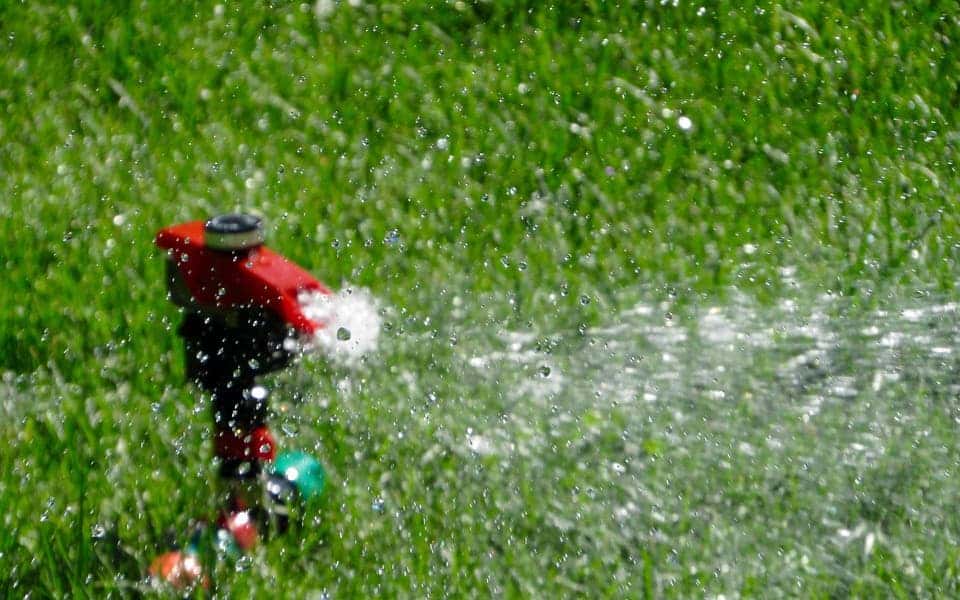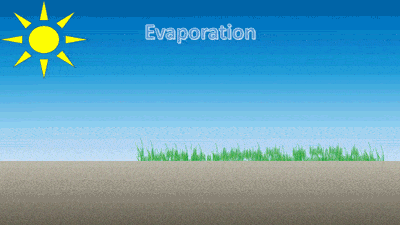Shortly before California entered its worst drought in record history, scientists measured how much water L.A. residents were losing to their front yards. The study found that in 2010, your typical L.A. household gobbled up 100 gallons of water per person per day. About 70 percent of all that water was uptaken by lawns while trees account for 30 percent. These results are simply staggering showing just how wasteful L.A. households can be.

The illusion of abundance
The measurements were taken in 2010, four years before the state enacted mandatory watering restrictions in the wake of a disaster dry spell. The University of Utah researchers looked at the so-called “evapotranspiration” (ET), which is a measure that sums together the evaporation of water from the soil and the release of water vapor, called transpiration, from plants.
To measure ET from the lawns, the team led by Elizaveta Litvak devised a shoebox-size chamber that could measure rapid changes of the temperature and humidity above the grass. The team traveled across the whole city, taking measurements from as many households as they could in the summer of 2010 and the winter of 2011. These runs provided the data that was fed into a mathematical model of ET rates from lawns under different conditions.

The ET rate depends on a variety of factors, among them temperature, humidity or how much water there’s in the soil. For each of these conditions, the researchers calculated the maximum amount of ET possible provided abundant water is available. In the case of L.A., water was feeding the soil in huge quantities.
To get a picture of how much waste we’re talking about, imagine putting a soaking wet towel out to dry in the baking sun on a hot summer day. Because it’s a thoroughly wet surface, the water should evaporate at the highest possible rate. Well, a wet lawn has an even higher ET rate because plants add to evaporation.
“The soil was so moist that plants were not limited in water use,” said Litvak, postdoctoral scholar and first author of the new study. “It was the maximum water loss possible.”
During the course of data gathering, the team formed this hypothesis that says more well off neighborhoods had more plants than poorer areas. Indeed, they eventually found the ET rates around the wealthiest neighborhoods were twice as high than those recorded in the poorer ones.
One of the most interesting finds of the study was that trees utilize far less water than trees. This likely happens because trees have a much smaller leaf surface area. Tree leaves aren’t directly irrigated either so they are less prone to evaporation.
“I have been surprised that we can maintain the tree canopy of LA with relatively little water,” said Diane Pataki, professor of biology, in a statement. “There’s this assumption that we need abundant irrigation to support trees. We can drastically reduce water use and still maintain the tree canopy.”
Since the measurements were taken, California went through a very strict water restriction period from 2014 to 2017, when the state finally received abundant wet weather. During this time, a lot of people were also financially incentivized to remove their lawns, and many did. It’s not clear, however, what the long-term effects of this practice will be. One possible negative outcome might have to do with trees. You don’t need to irrigate trees too much but if you stop altogether during a very dry period, it’s possible these can die.
“California’s recent drought highlights the need for urban as well as agricultural conservation,” says Tom Torgersen, program director in the National Science Foundation (NSF)’s Division of Earth Sciences. “For Los Angeles, the greatest evapotranspiration was due to turf grass and seed-producing trees; palm trees made very small contributions. Both provide an alleviation of the heat island effect and reduce the need for air conditioning. However, the benefit is not evenly shared. The higher the median income, the greater the local evapotranspiration, indicating cooler temperatures there and higher temperatures in poorer sections of the city.”
Findings were published in the journal Water Resources Research.


